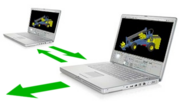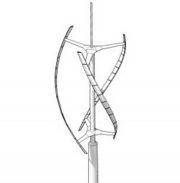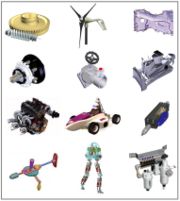Difference between revisions of "Open collaborative design"
m (Open design moved to Open collaborative design) |
|||
| Line 9: | Line 9: | ||
<div style="float:left; width:50%;"> <!-- This width add to the the margin below to equal 100%--> | <div style="float:left; width:50%;"> <!-- This width add to the the margin below to equal 100%--> | ||
{{frame1|Suitable CAD software}} | {{frame1|Suitable CAD software}} | ||
| − | {{frame more1|Turning collaborative designs into | + | {{frame more1|Turning collaborative designs into physical objects}} |
</div> | </div> | ||
Revision as of 01:18, 7 November 2006
|
Open collaborative design involves applying principles from the remarkable free and open-source software movement that provides a powerful new way to design physical objects, machines and systems. All information involved in creating the object or system is made available on the Internet – such as text, drawings, photographs and 3D computer-aided design (CAD) models – so that other people can freely re-create it, or help contribute to its further evolution. It is essentially the same principle that is used to progress scientific knowledge, however in reality it is much more open and transparent than much of contemporary scientific research.
A core element of this development model is a principle called 'copyleft' Open collaborative design is a nascent field that has huge potential to radically alter the way we create goods, machines and systems – not only for personal items but all the way up to components of national or global infrastructure.
There is no reason why open source development methods currently used with many software projects cannot be applied to machines and systems in the physical world. In fact physical objects are much more intuitive to understand than abstract computer code especially when viewed using 3D CAD that can show grouped sub-assemblies, exploded views, kinematics, cross-sections, supporting animations and notes. It is just that the freely available tools and infrastructure needed for this to be possible do not yet exist in a user-friendly and mature state needed for widespread adoption. All the technologies exist, they just need to be put together in the right way and refined.
The simplest method is to share information through a website on how to make things using text, diagrams and photographs. A more sophisticated way to collaborate on complex machinery and products would be to share CAD assemblies much like project teams do in engineering and product design companies, knitted together with supporting information in an open and freely structured environment, much like a wiki There are certain barriers to overcome for open design when compared to software development where there are mature and widely used tools available, and the duplication and distribution of code cost next to nothing. Creating, testing and modifying physical designs is not quite as straightforward because of the effort and time required to create the physical artifact. However the physical world is catching up fast with the virtual world in this respect.
With many people contributing to open design projects, as happens currently with software, a universal commons will emerge made up of vast libraries of designs for everything from components and sub-assemblies through to complete artefacts, machines and complex systems, available for anyone to download and incorporate into their own designs, or help evolve as part of a wider project.
As in software, it would be useful for components and assemblies to be as 're-usable' as possible in the sense of being able to be incorporated in many different machine designs. To aid this it should be possible to specify the vital dynamic functions of a component or assembly in the CAD software, so that it can easily be modified in shape and scale so it can be incorporated into a new design while ensuring it still works correctly. This will enable a huge reduction in duplication of effort and allow people to focus their efforts on creating new machines of increasing complexity and building on the work of others. One interesting side-effect of open collaboration is that it tends to lead to highly modular design. FireFox and Linux are examples of this. Modularity also leads to a high degree of reusability; someone designing a new piece of hardware or software can pick-and-mix parts of existing projects. This works well in software, but may have to be abstracted somewhat to work in physical systems where dimensions are obviously important to fit with other components. Perhaps not counting the scientific community, free and open-source software is where the modern concept of commons-based peer production Networks of people (both companies and individuals) collaborate via the internet to develop useful software that others can freely benefit from. Not only is the software free to use, but so is the human-readable blueprint of the software, known as the source code People who doubt the viability of the principles outlined on this page in the real world only have to look to this sector to see amazing examples of what is being achieved already.  |
 [print version]
[print version]  [update]
[update]  [site map]
[site map]





